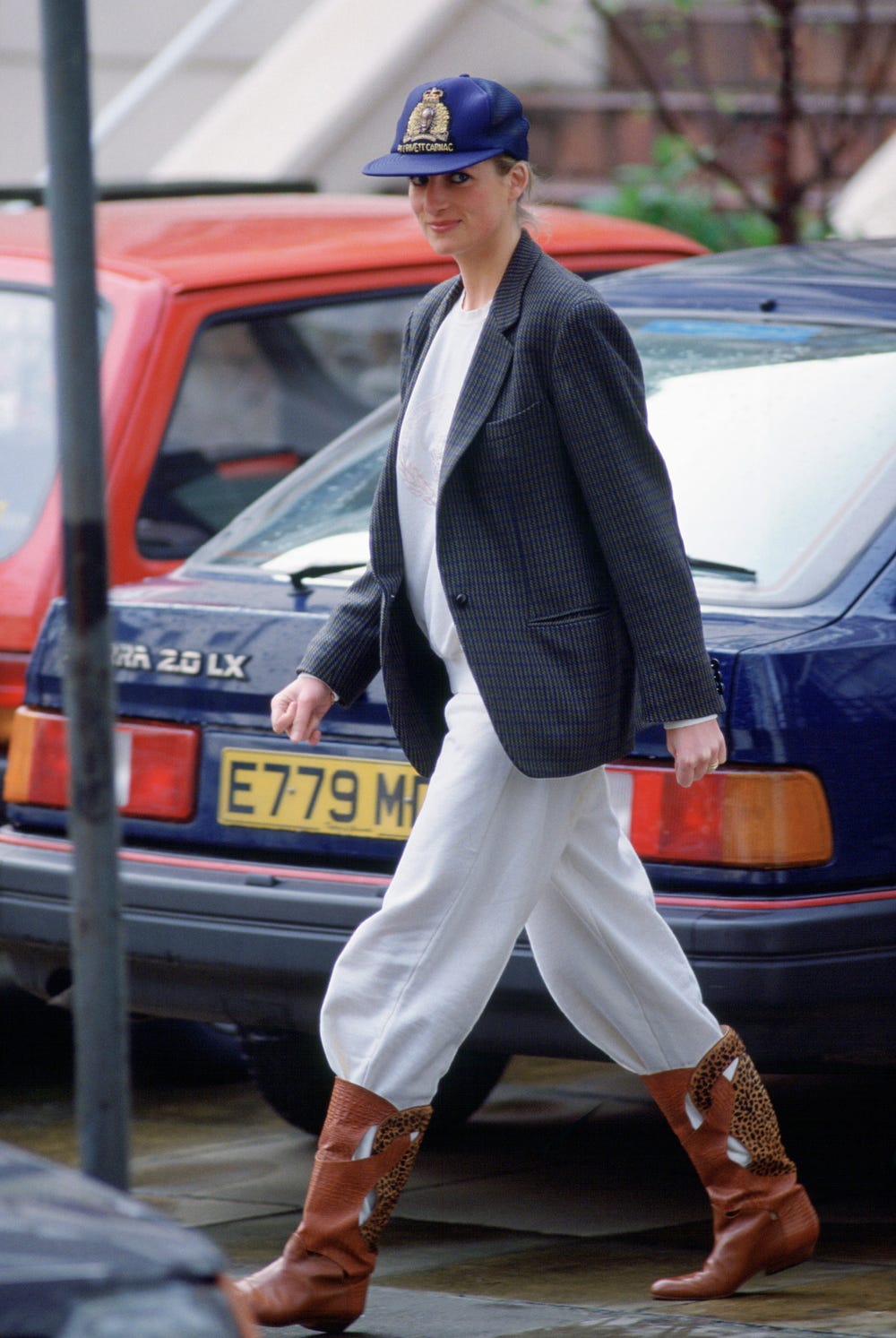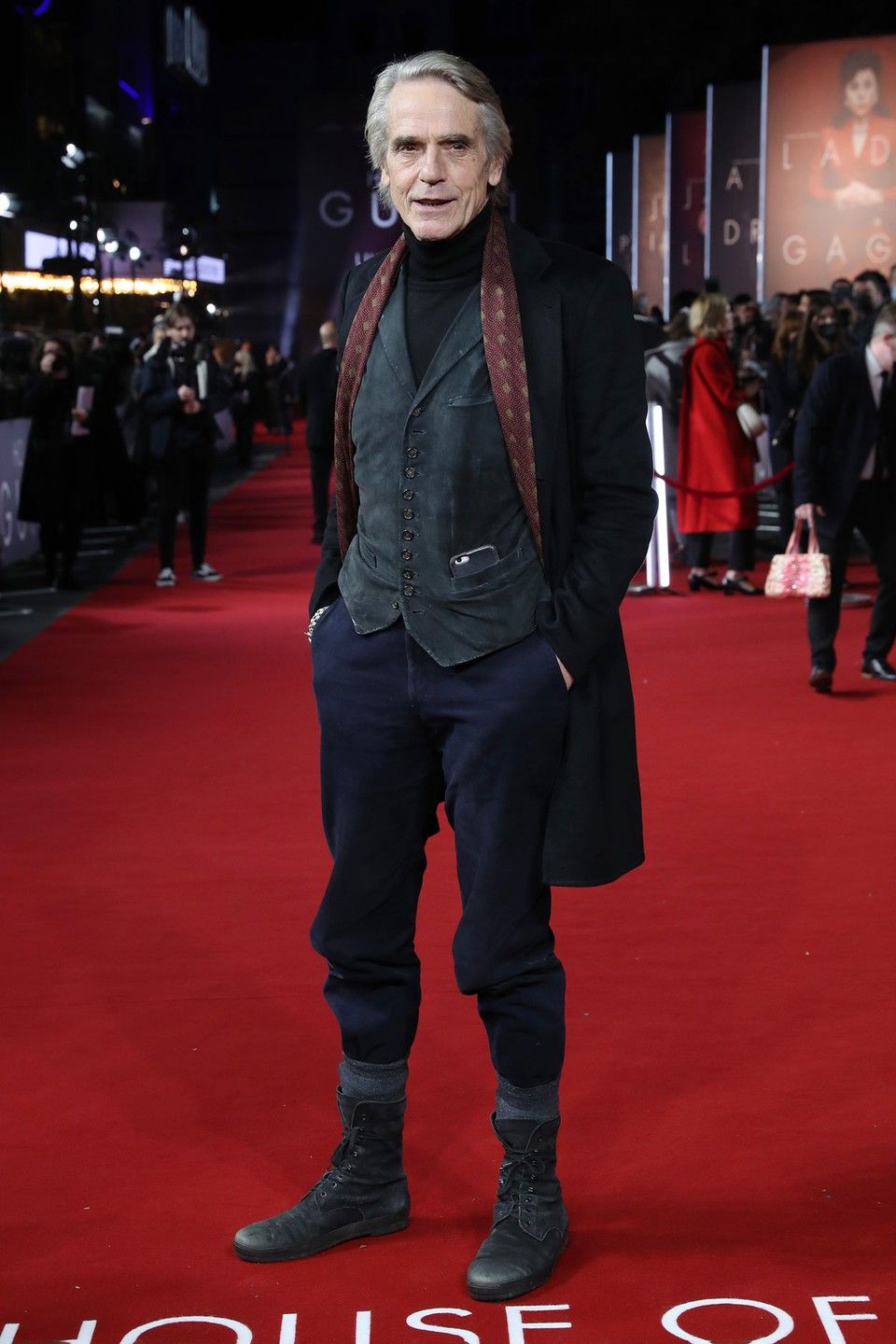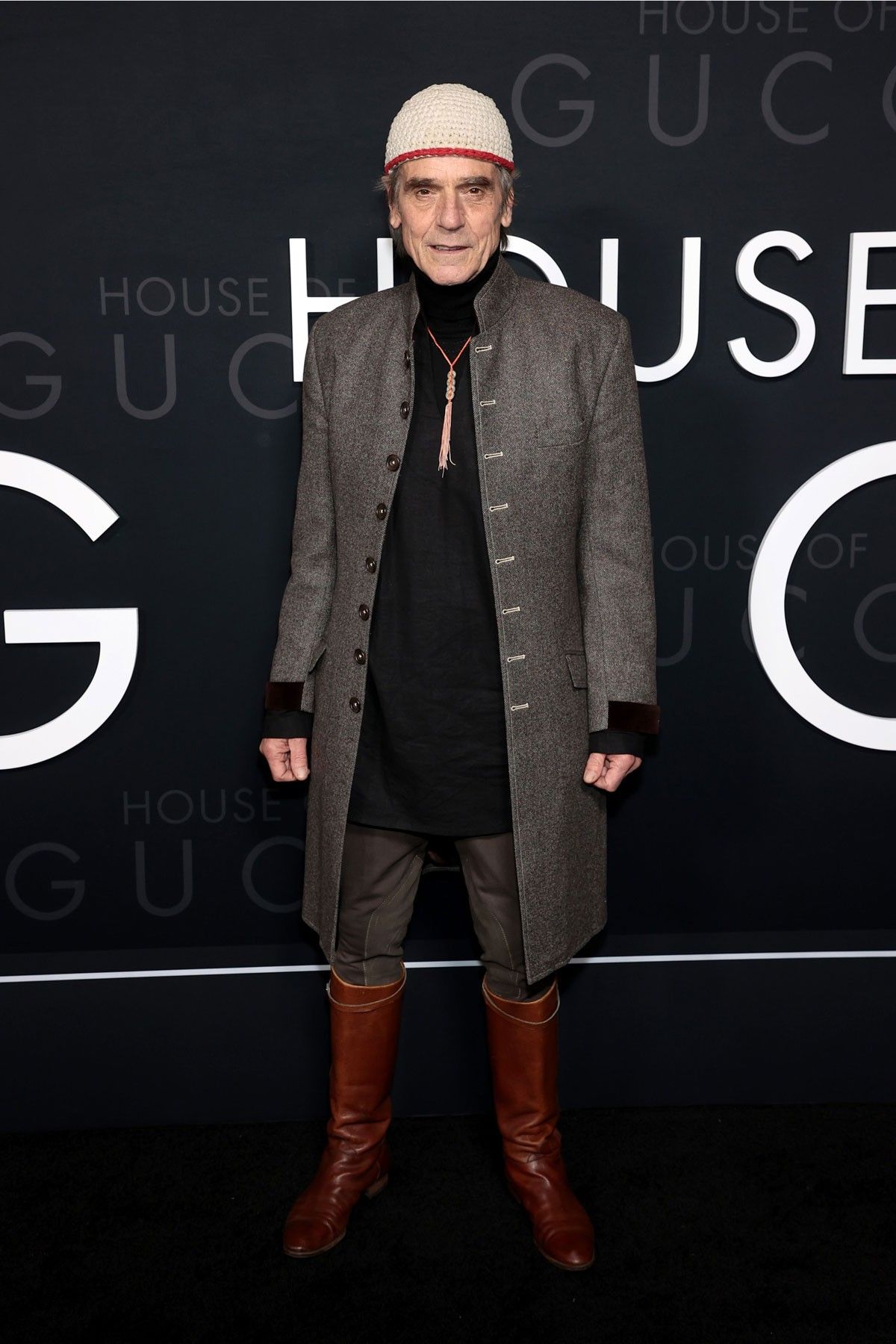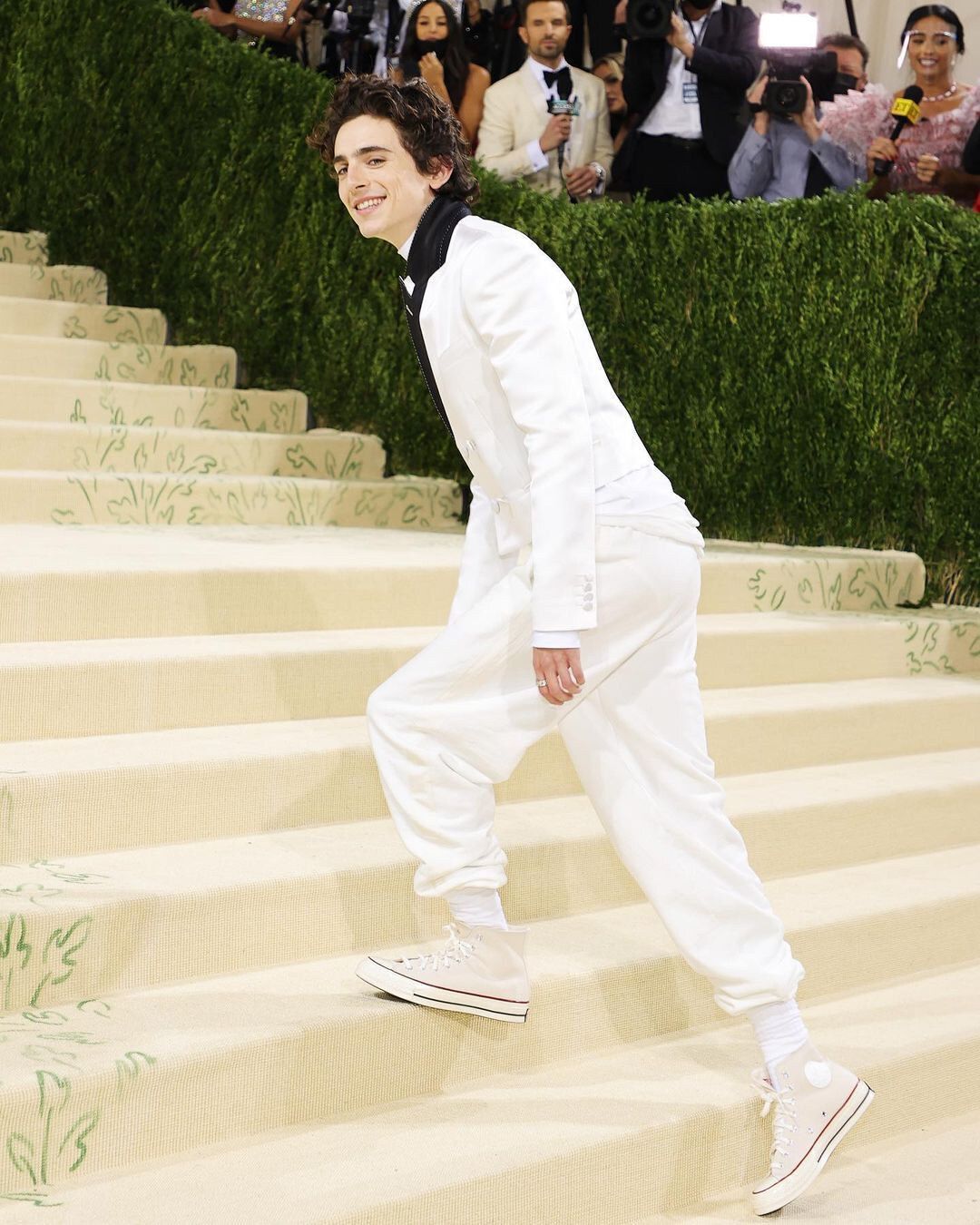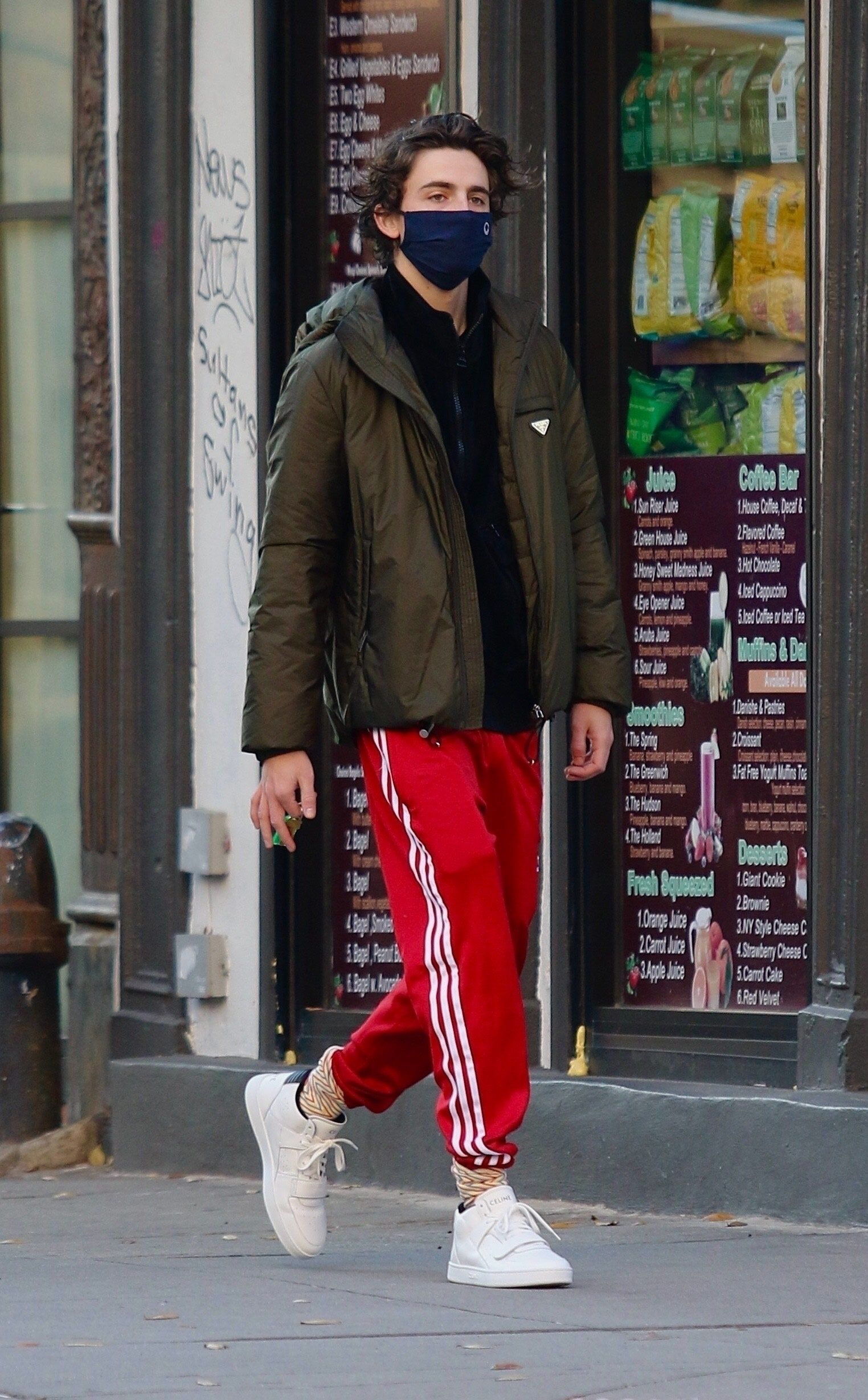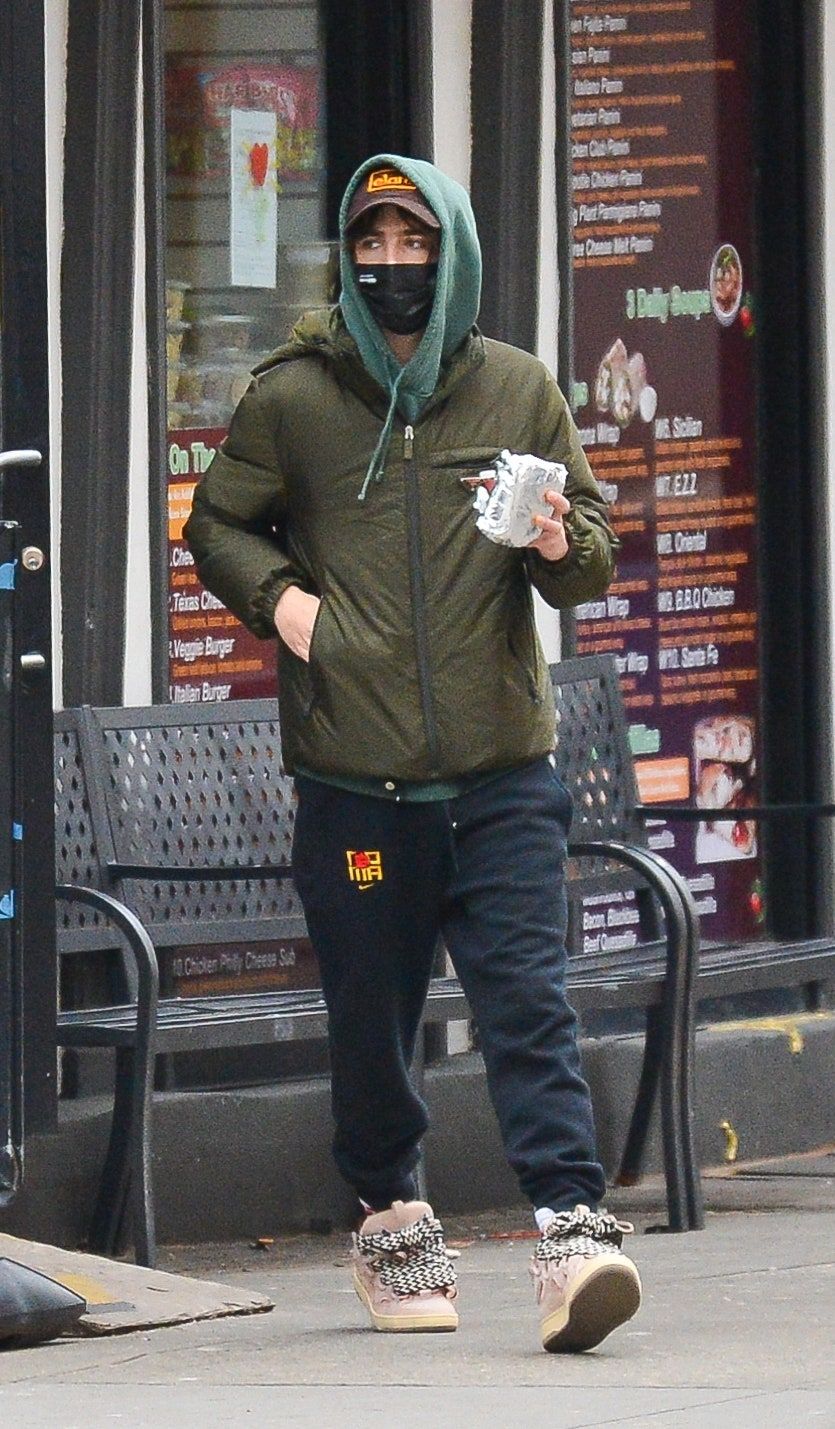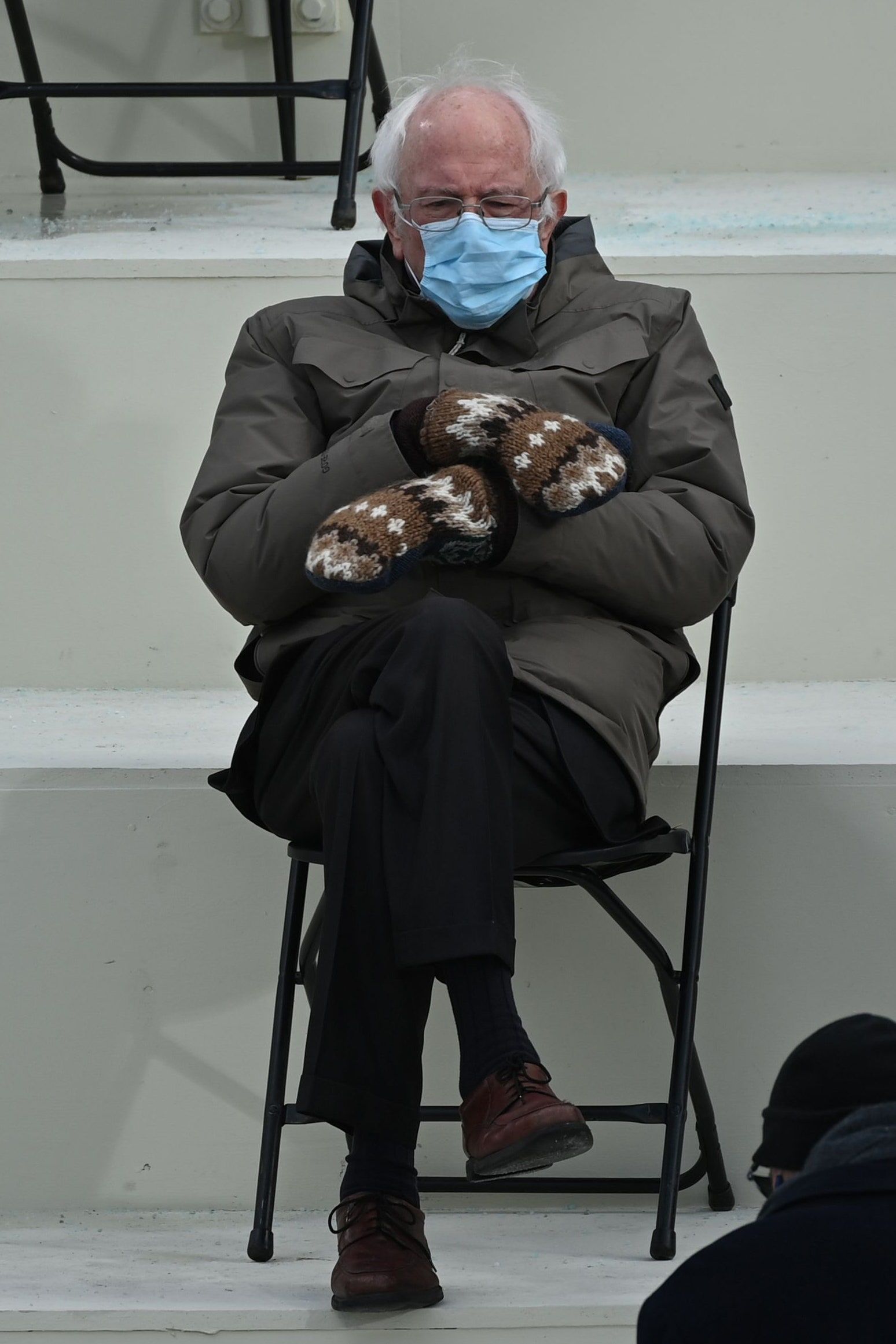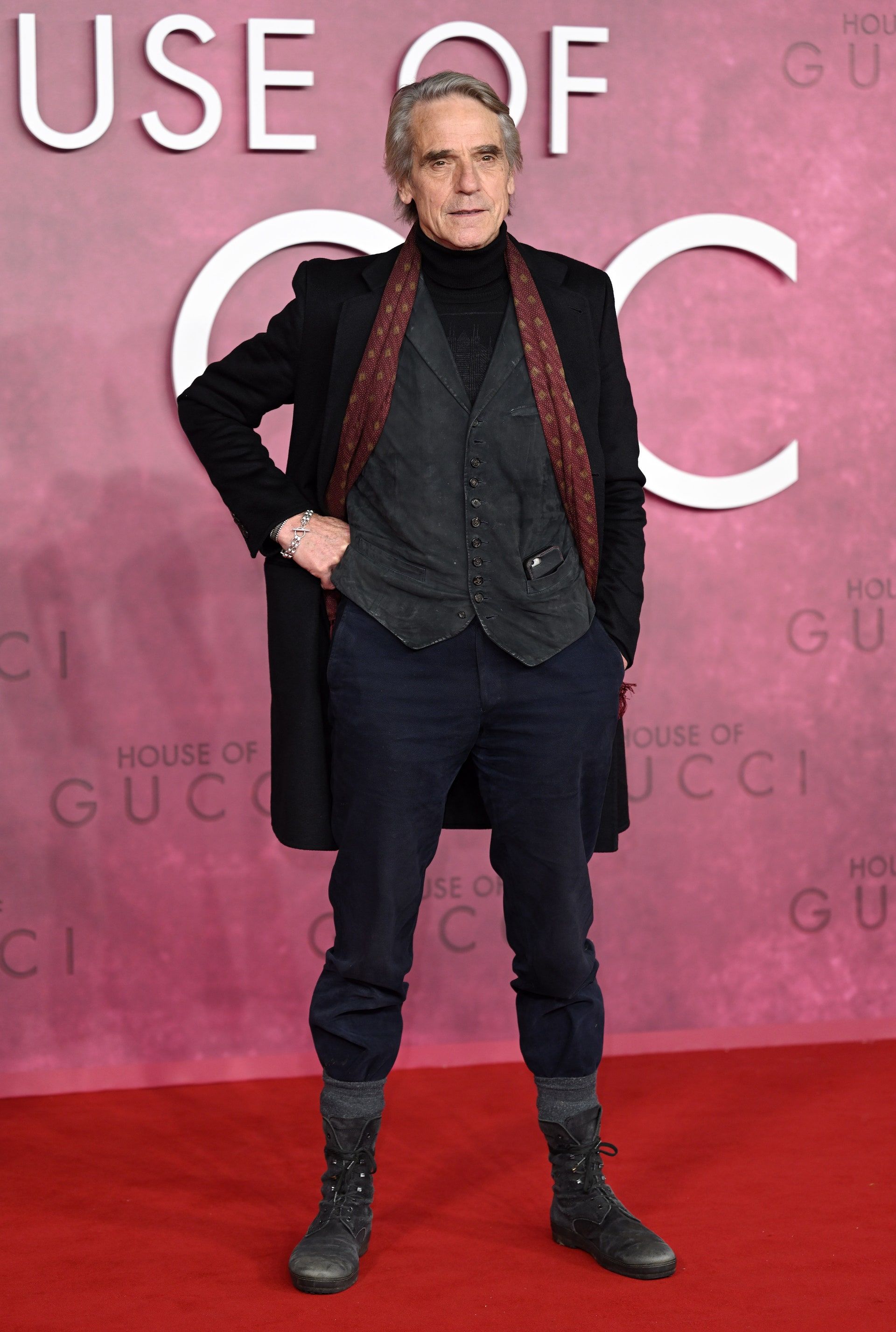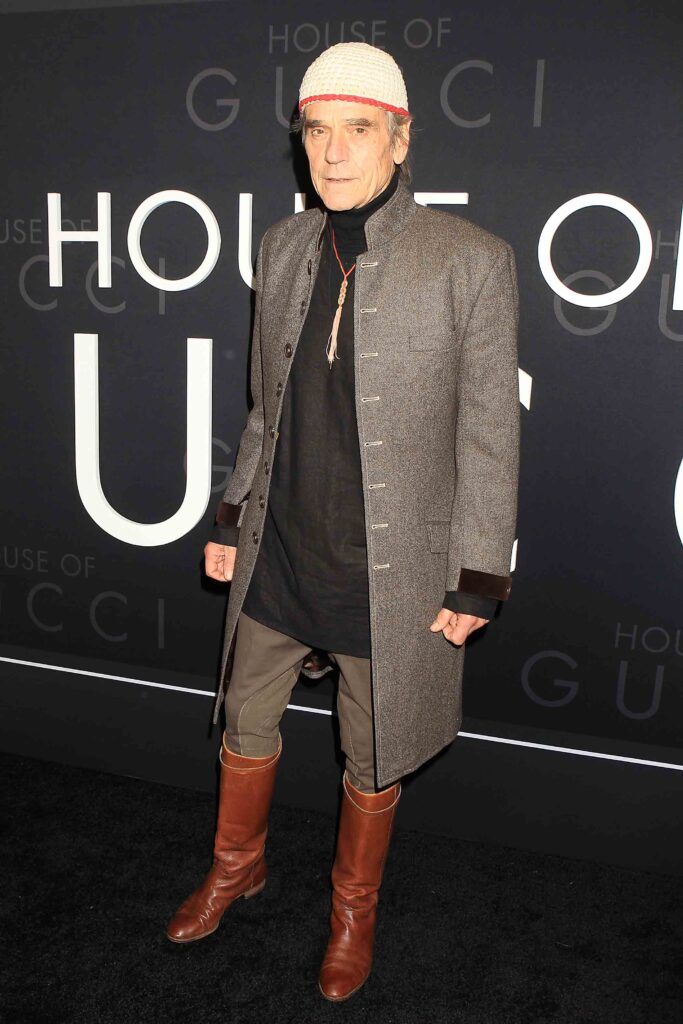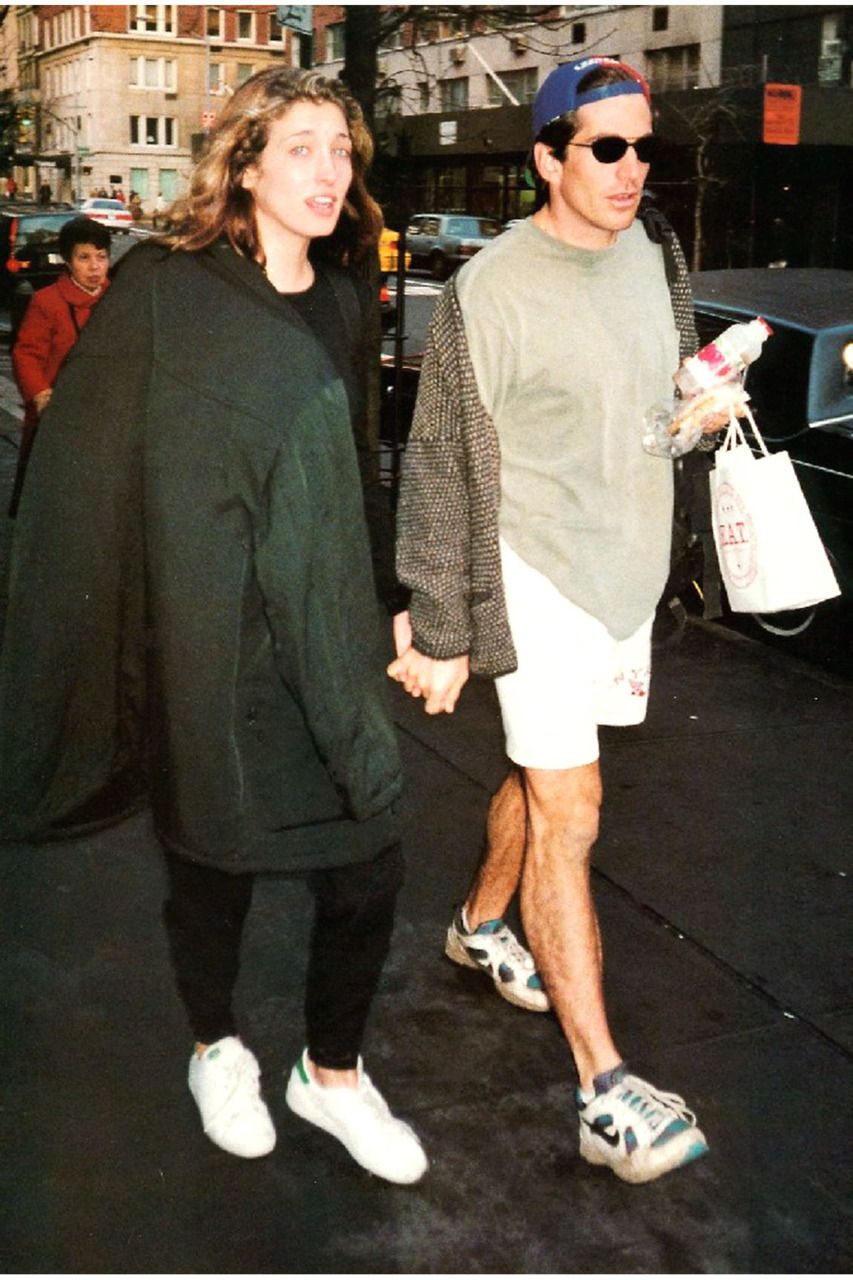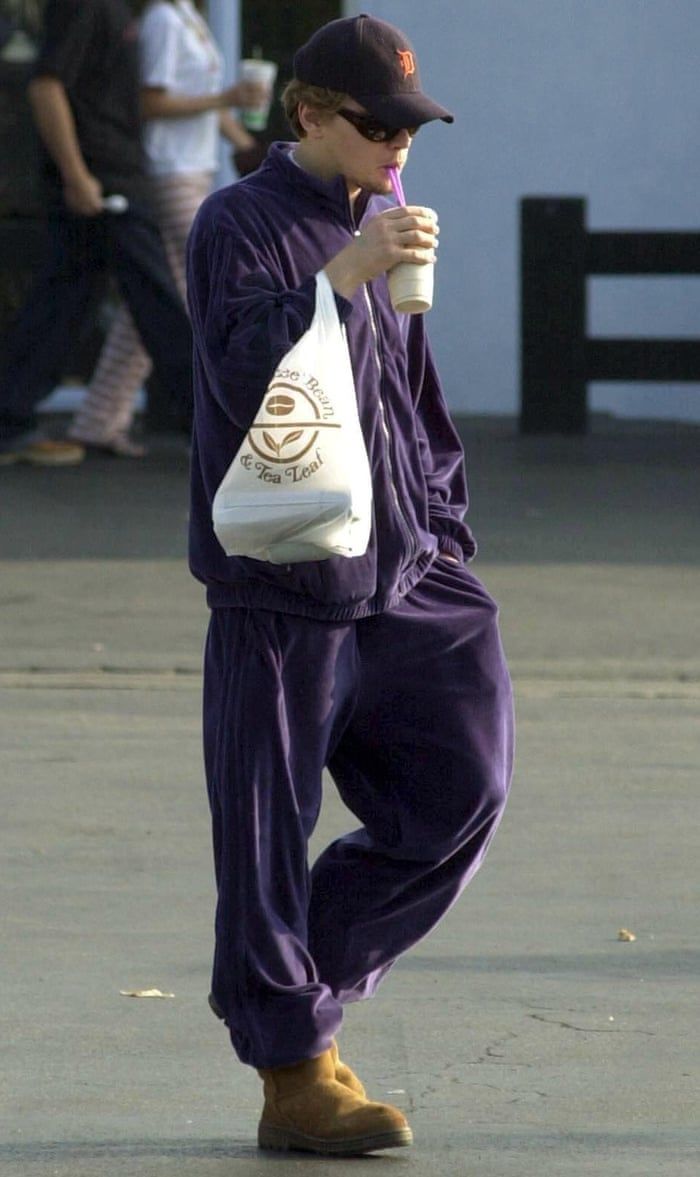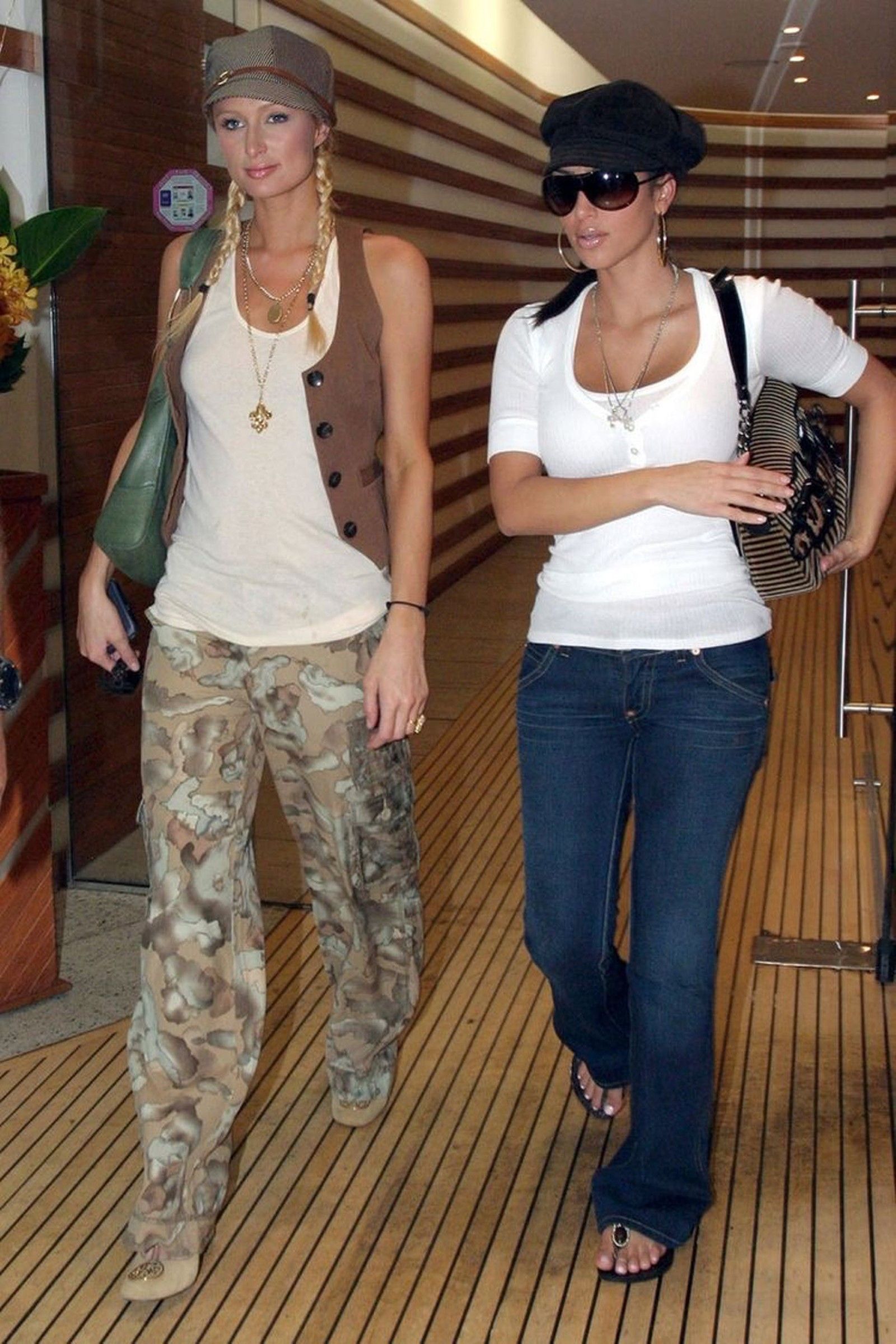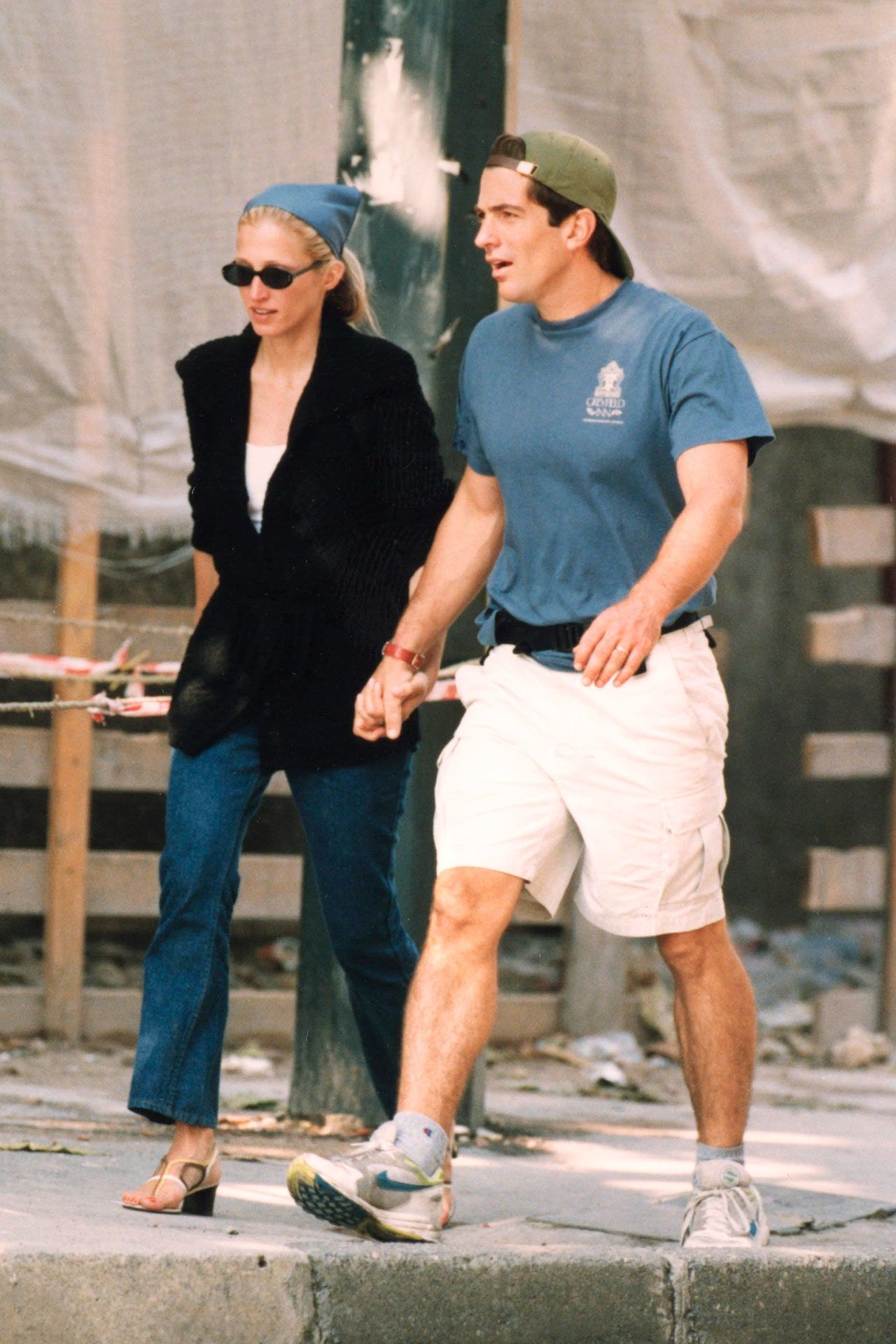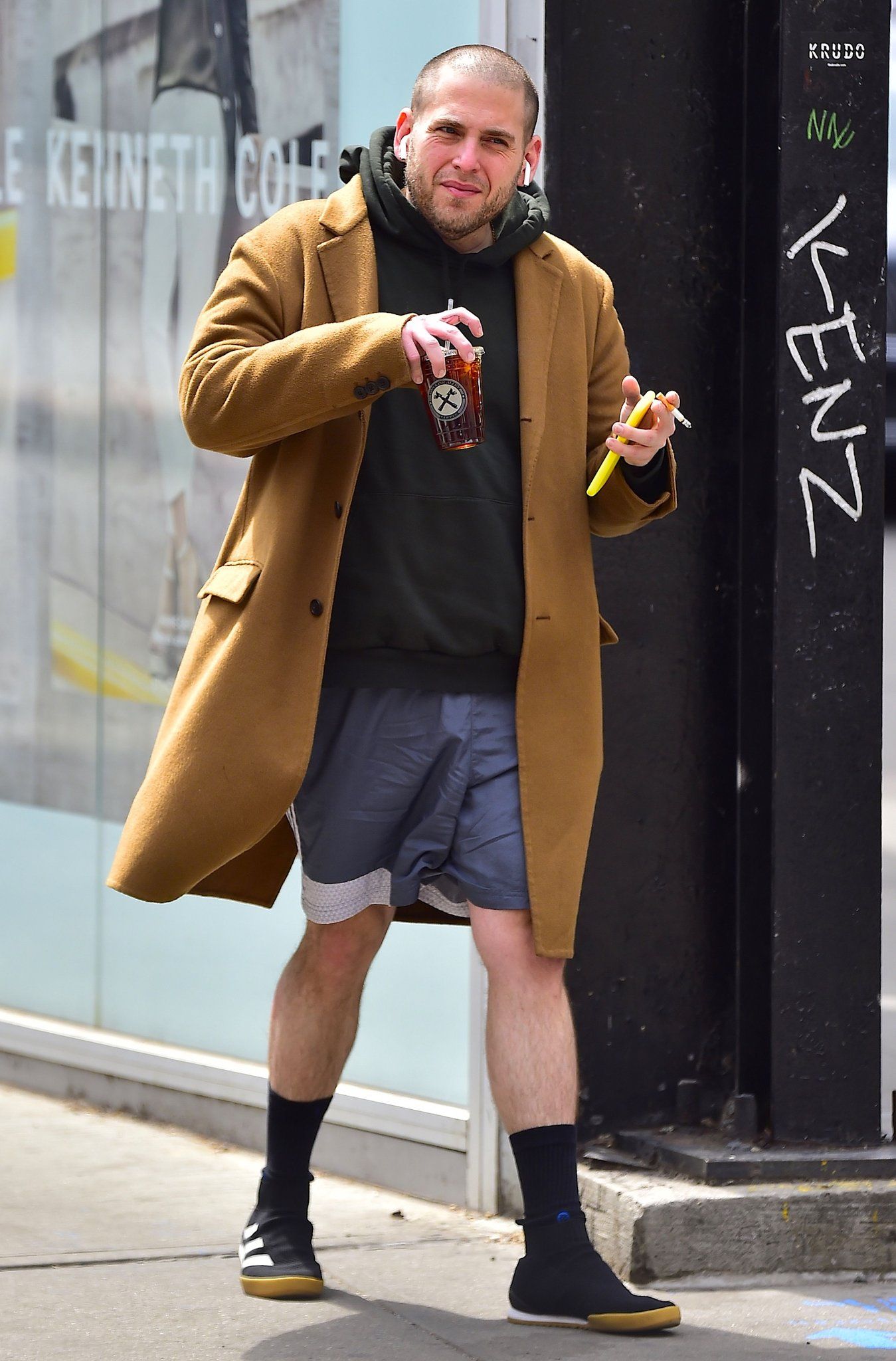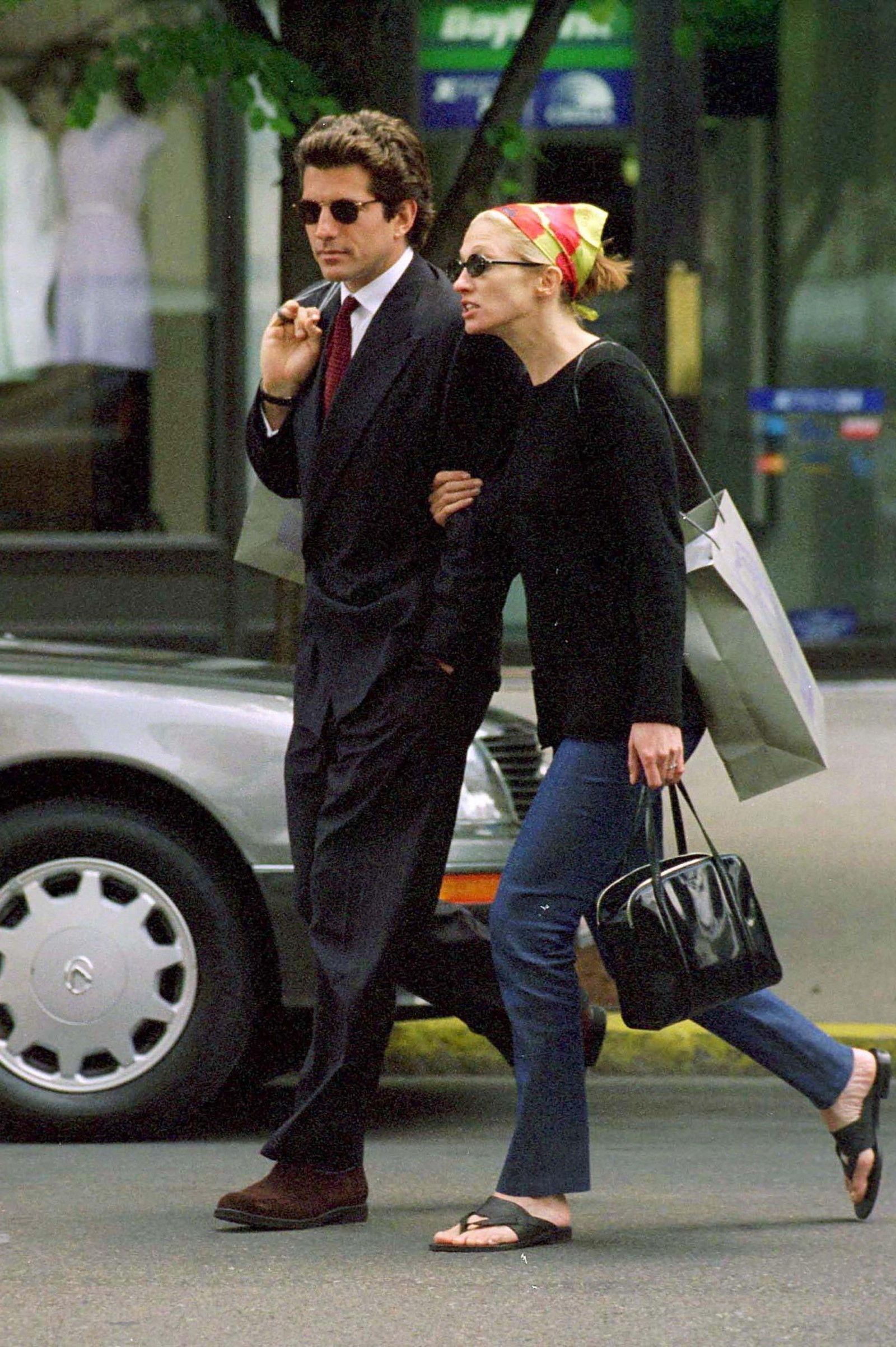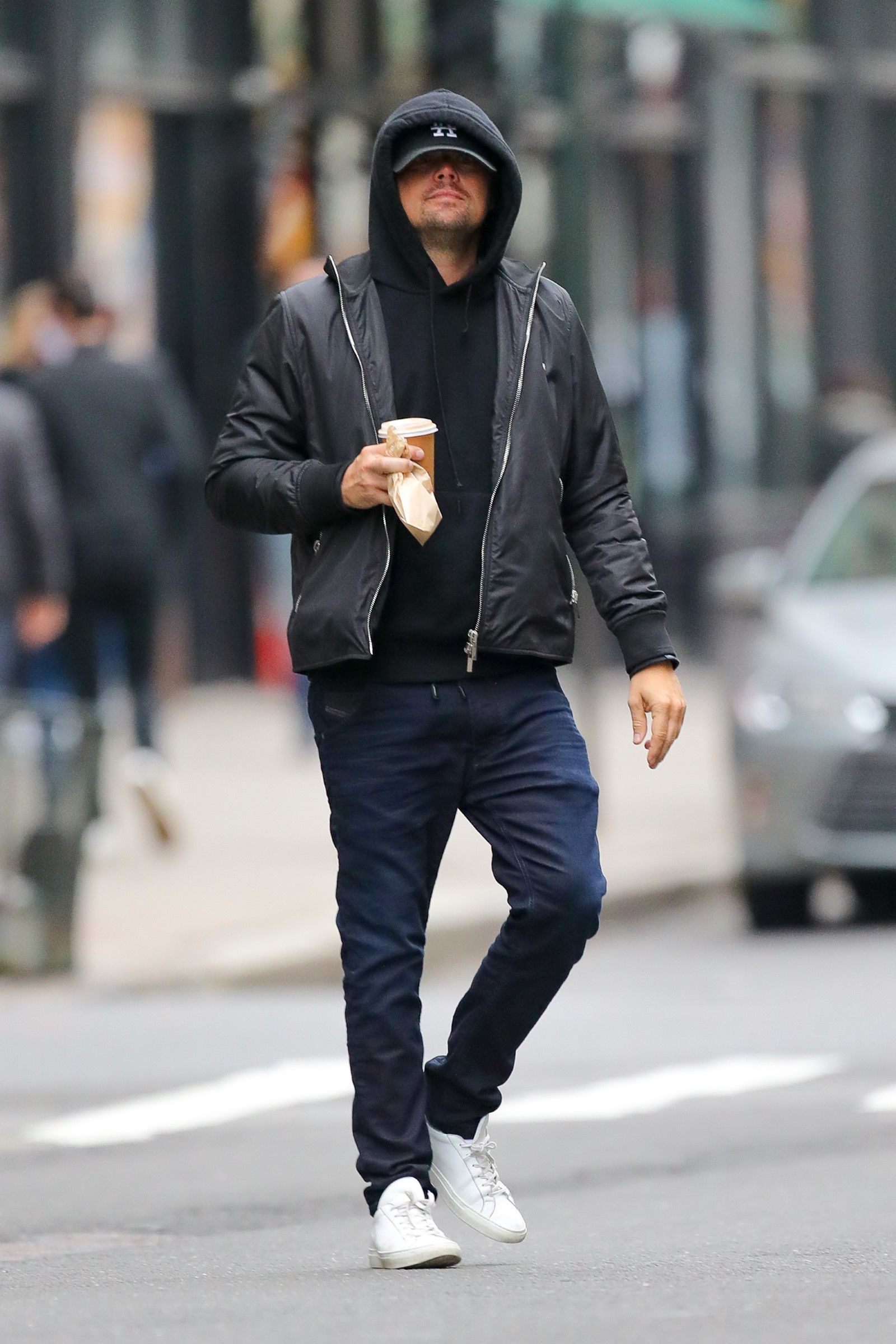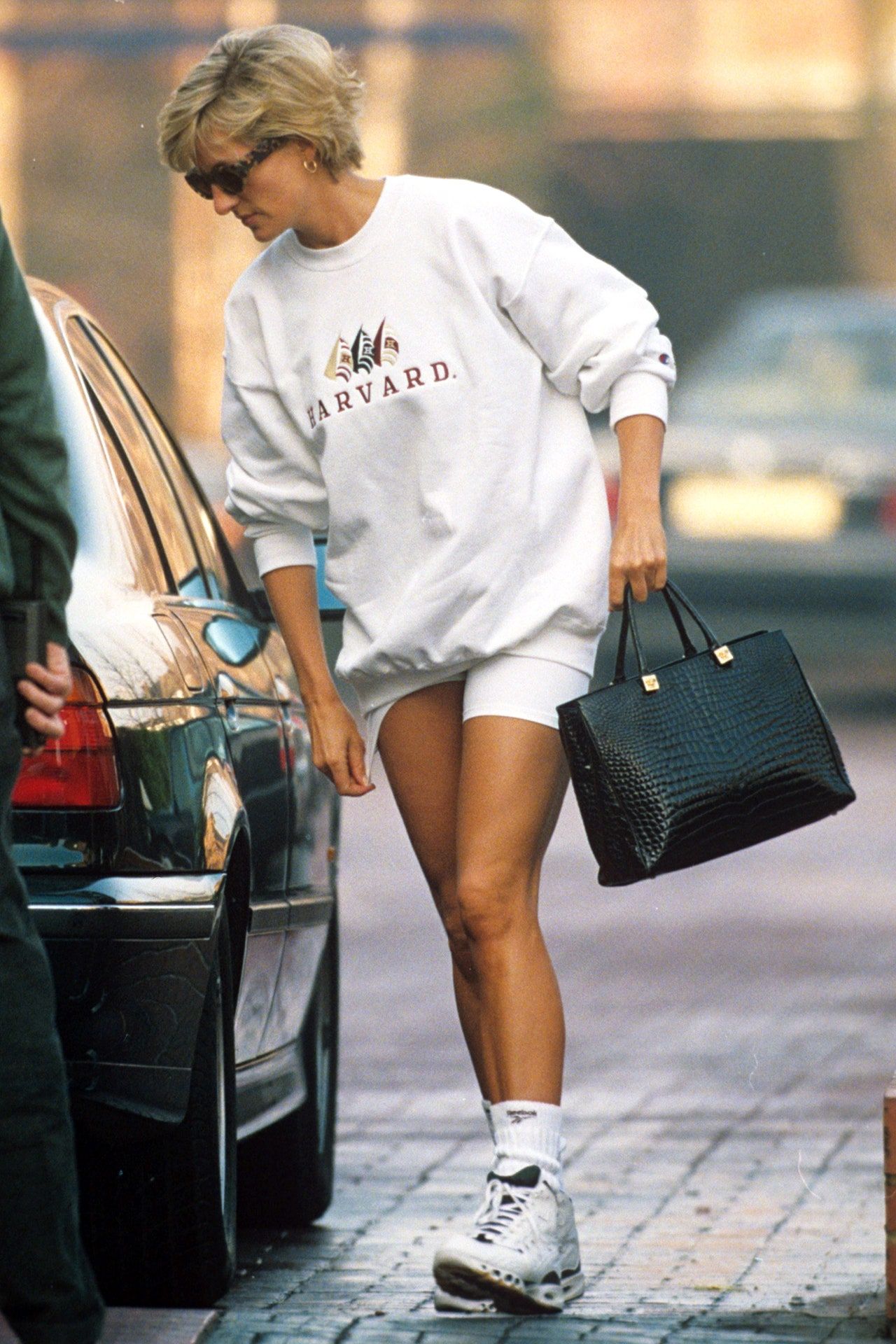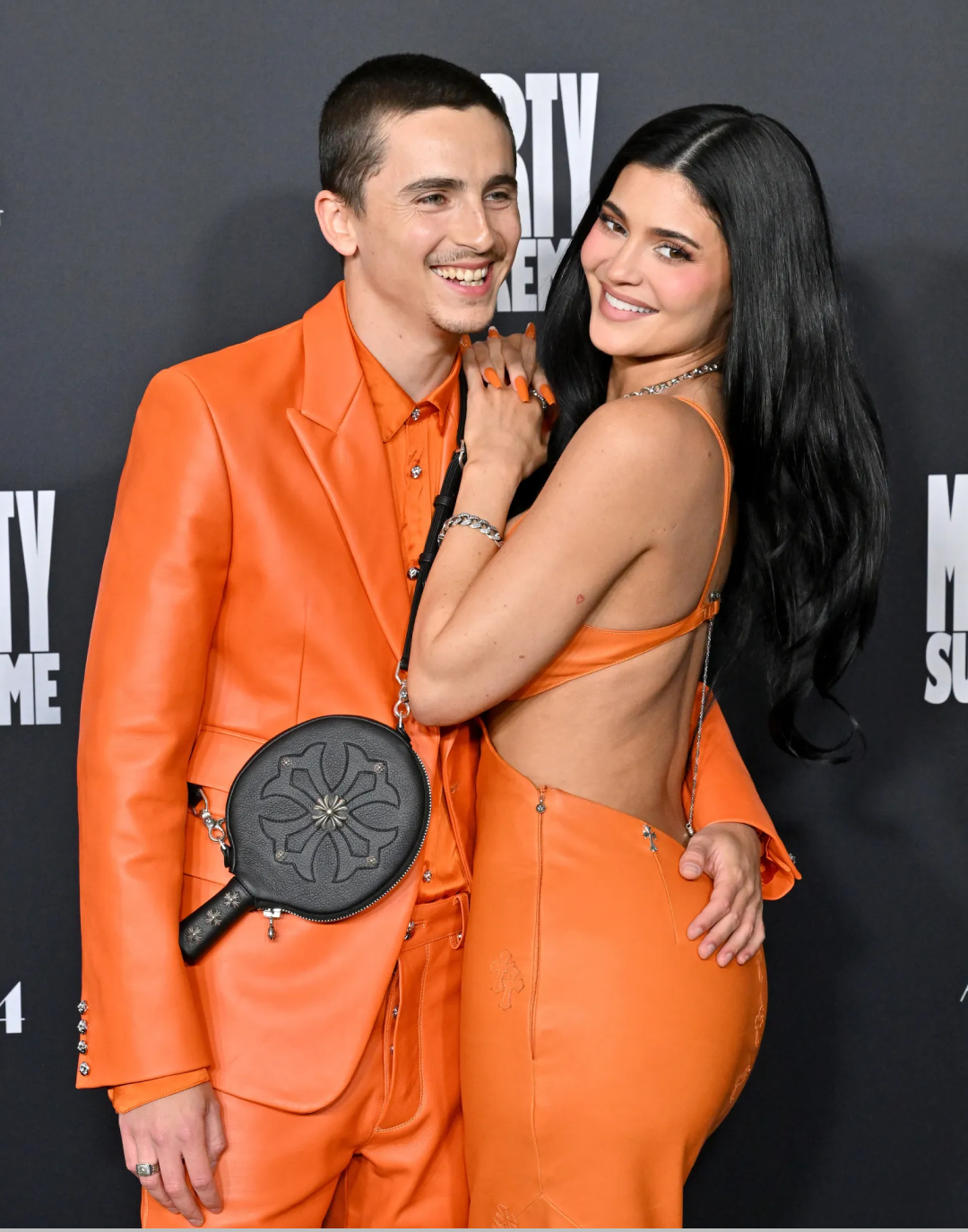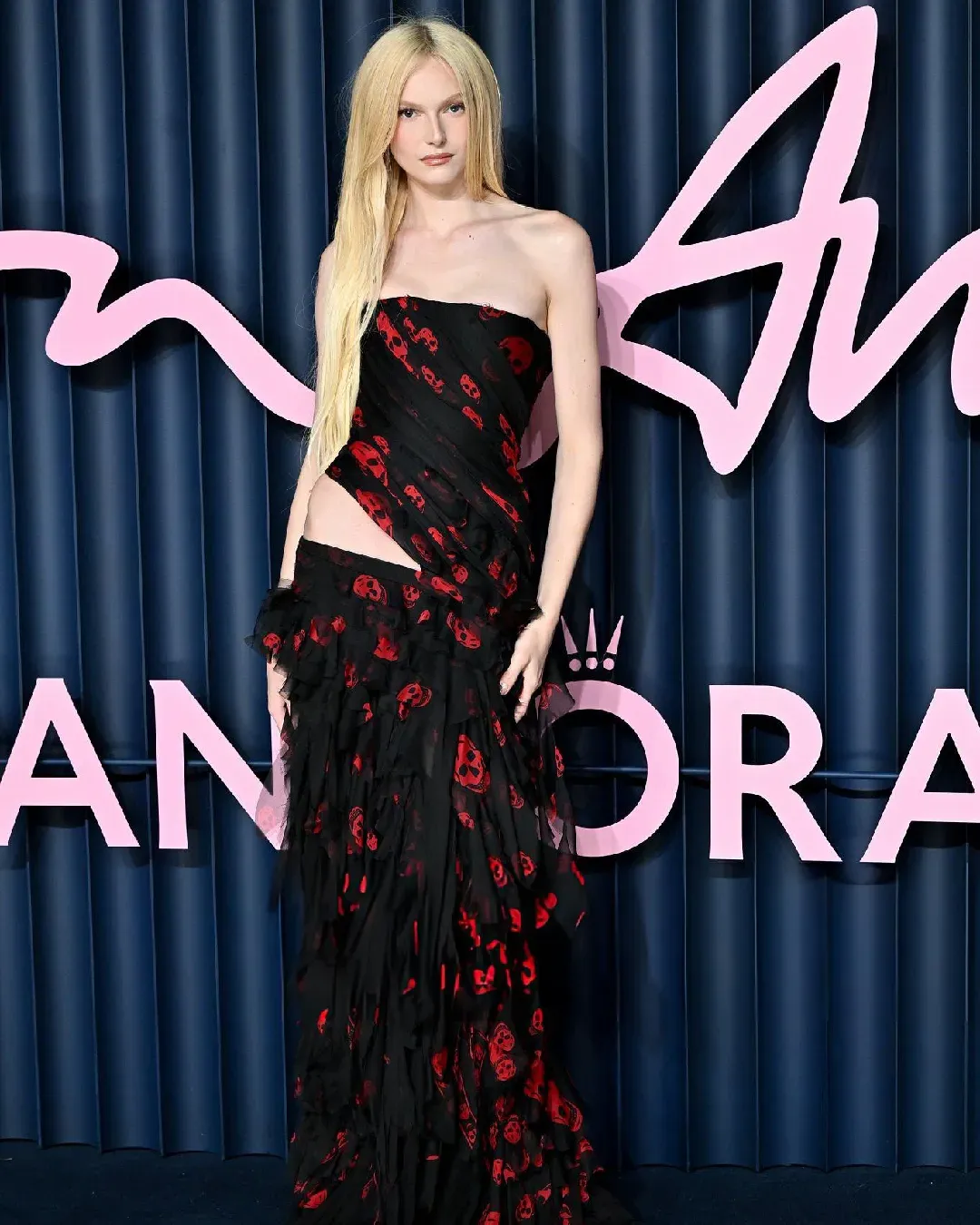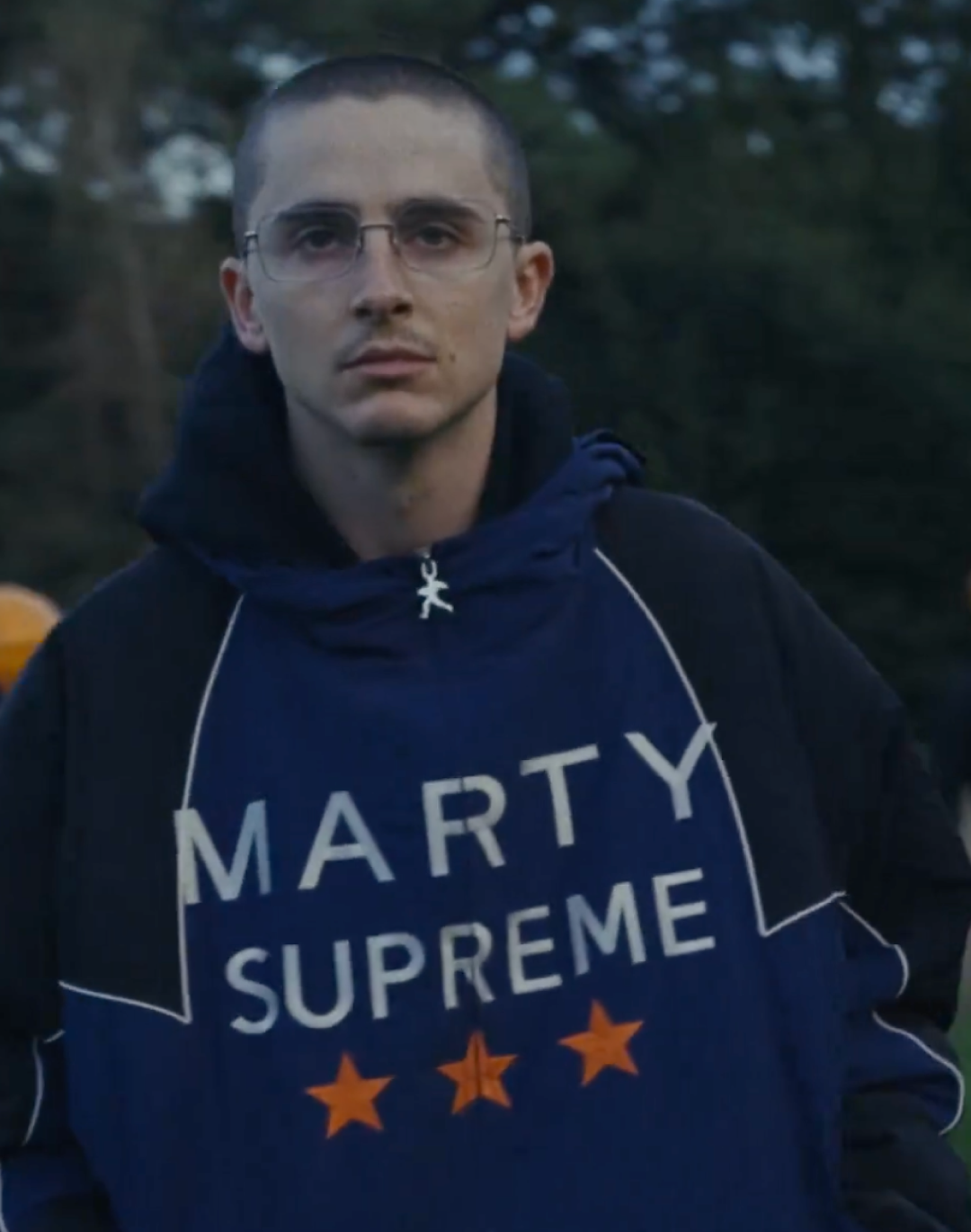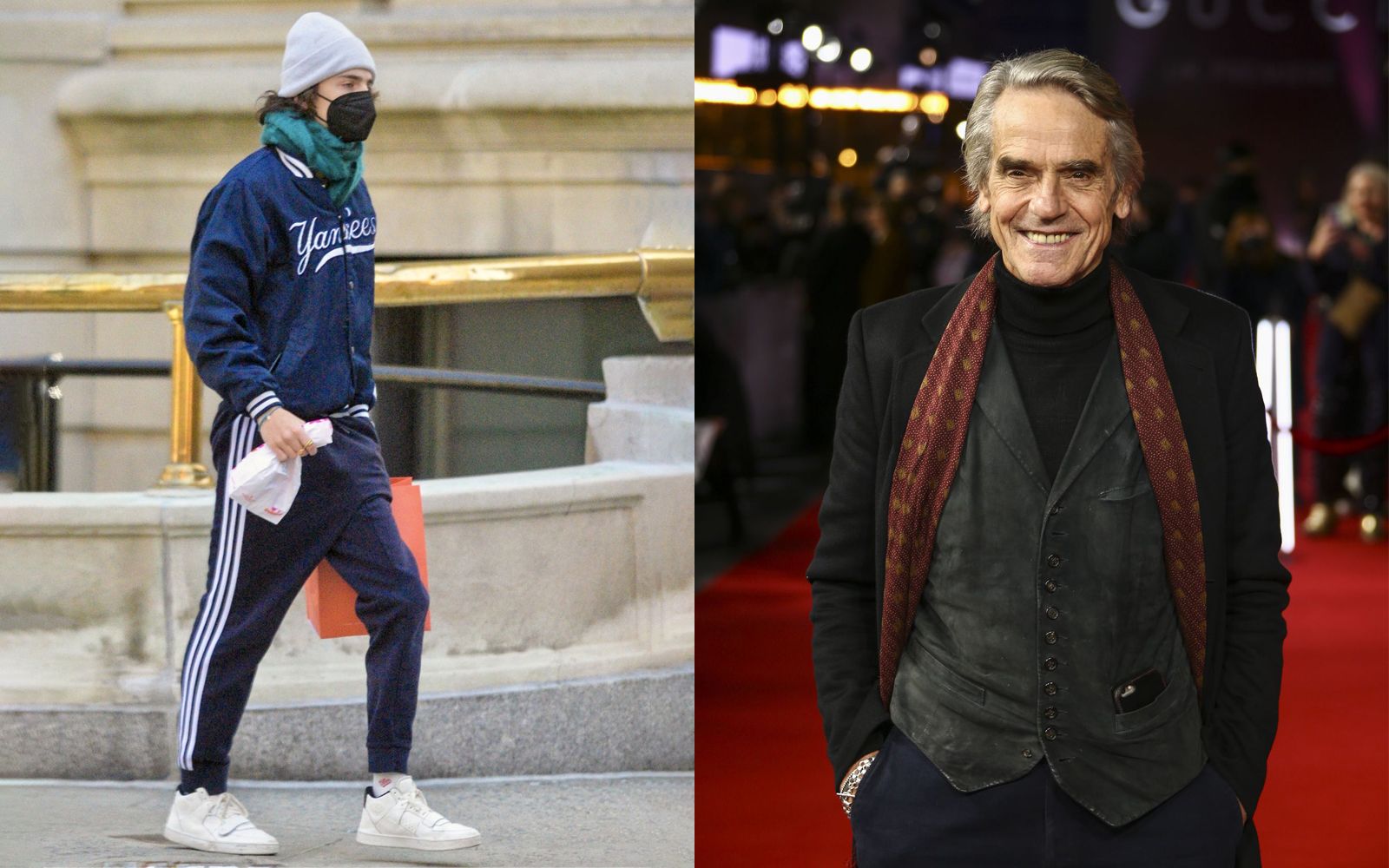
Have we entered the era of slouchy dressing? There's a short gap between sloppy and chic
Lady Gaga was the undisputed star of the long press tour of House of Gucci, Ridley Scott's highly anticipated film. Yet, during the many red carpets that accompanied the various premieres of the film another co-star attracted the attention of the public and the press for his outfits: Jeremy Irons. Both at the London premiere of the film and at the New York premiere, the 73-year-old actor presented himself with extremely relaxed and casual boho-chic outfits, with details such as trousers tucked into socks, a crochet hat, ruined boots, old vests, long Korean-style jackets. None of these looks are particularly remarkable in themselves except that they are in open rupture with the hyper-sophisticated and artificial style of the other co-stars: if Lady Gaga wore evening dresses by Gucci, Valentino and Versace; and Jared Leto showed up with a series of Gucci velvet suits fresh from the catwalk, Irons' looks seem to have been composed without the help of stylists, with clothes already in the actor's possession – this would explain as much the original naturalness of those looks as their neglected and nonchlant appearance.
A deliberate neglect, in fact, has united Irons' outfits with those of other celebrities this year: the most recent are Pete Davidson and Justin Bieber, whose latest street styles have been compared to those of the notoriously badly dressed Adam Sandler; but among the moments of viral slouchiness this year there were also the arrival of Bernie Sanders at the presidential inauguration last January and the appearance of Timothèe Chalamet in overalls and Converse at the Met Gala in September - or any of his walks through the streets of New York. What catches the eye of these outfits is their strong contrast with the looks studied at the table with which many other celebrities present themselves at the events. Just like Bernie's handmade muffles by the Vermont school teacher, Chalamet's adidas acetate pants and Irons' worn boots are also the real statement, which seem to have been according to a criterion that, some time ago, Rick Owens summarized with the phrase: «The coolest thing is when you don't care about being cool anymore».
The reason why these outfits have attracted so much attention should perhaps be sought in our modern obsession with street style and the evolution of this photographic genre in the last thirty years. In the 90s and early 2000s celebrity street styles were extremely natural and de-mystifying compared to red carpet images and yet they anticipated fashions by years. From sporty-chic icons like Lady D, Carolyn Bessette and her husband John Kennedy Jr., through airport outfits in the early 2000s to Paris Hilton in Juicy Couture and photos of Leonardo DiCaprio in Ugg overalls and boots that went around the world in 2013, there was a time when celebrities didn't have stylists or partnership contracts with brands and expressed a more personal style - often running the risk of dressing quite badly but also manifesting a more authentic style and close to the truth. Leonardo DiCaprio, among other things, is credited with the paternity of the style called "incognito" which takes its name from the hoods, glasses and hats used to hide the face as well as from the attempt to pass for anonymous passer-by in sweatpants and indistinct sneakers.
Today things are different, to the point where many have wondered if the status of modern icon that Zendaya enjoys, for example, is to be attributed to the actress herself or to her stylist Law Roach, while in recent months Kim Kardashian and Kanye West have worn exclusively Balenciaga as unofficial testimonials of the brand and therefore in a certainly successful but also uncritical way and for purely commercial purposes. Curation, that is, has increased a lot both on the streets and on the red carpet helping to create looks that are certainly better but also much less spontaneous and natural and therefore more adherent to a pre-fabricated public image that doesn't necessarily express a truly personal attitude and style. For this reason, recently, these celebrities dressed with total negligence have fascinated the public: the sloppiness of Thimotèe Chalamet, the "clothes chair" silhouette of Justin Bieber as well as the red carpet looks of Jeremy Irons seem much truer than the hyper-studied costumes of Kim Kardashian, the always coordinated outfits of BTS and Maneskin but also the street looks of Bella Hadid who, although always pleasantly informal, always contain the most recent, hyped and unobtainable piece that has dropped on the market. Something similar has also happened on social media where, for example, to enter the ranks of the #Grailfits of Grailed, there are only self-styled looks and therefore expressive of the aesthetic taste of the wearer with particular attention to the distressing of the garments, to the most unusual or archival vintage item and, in short, to that invisible but always present dichotomy between insouciance and affectation, between the cult of folds and small defects and the maniacal care of a total look as idealized as it is artificial and not very relatable.
In the fashion public it would seem that a new awareness is arising that creates a distinction between "commercial" and "sincere" looks – with a greater instinctive appreciation that goes to the latter precisely because of their authenticity. And if in fact we consider how the idea of realness has become the most elusive puzzle for brands, with customers looking for the realness of design with archival fashion, the realness of prices with vintage and secondhand, the realness of craftsmanship and construction with the mania for DIY, the handmade, the distressing, the viral success of the slouchy looks seen over the last few weeks portends an imminent rebellion of the public to the dominance of social algorithms on fashion trends and a return to a new sincerity.










































